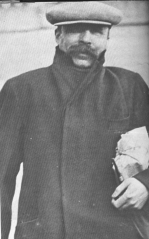

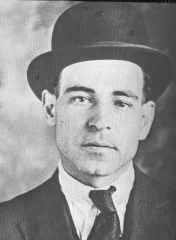



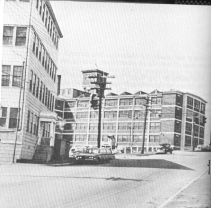
The murder site, in South Braintree, Masssachusettes.
The evidence presented was the fact that both men were radicals and they had access to a car that fit the description of the getaway car at the crime scene. They did not own the car, but they did have access to one, as many other possible suspects did. Witnesses had described the men at the scene as "Italian", which is a very open description. Both men had been off work that day, and they each carried a gun. The two points of evidence used to convict Sacco and Vanzetti were that Sacco's pistol was the type that was used in the murder, and they had access to the car. Furthermore, both men spoke little English and often misunderstood the questions they were asked. It seems to me that this language barrier gave the prosecution a chance to manipulate Sacco and Vanzetti's answers. America is a democratic nation in which the accused are innocent until proven guilty. It is obvious that there is not enough evidence to prove that Sacco and Vanzetti commited the crime, yet this inadequite evidence played a large part in the trial.
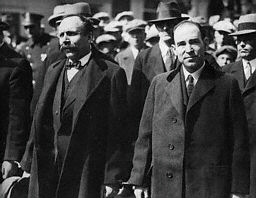
Witnesses gave conflicting statements as to the whereabouts of Sacco and Vanzetti at the time of the murders, whether or not they matched the witnesses' descriptions, and whether or not the bullets in the bodies came from the guns they carried. The Judge, Webster Thayer, the jurors, and the witnesses have been accused of bias. There is no doubt that they were prejudiced towards Sacco and Vanzetti for one reason or another, otherwise they would have not been found guilty with such lack of evidence and conflicting evidence.
Luckily, the general population was not as biased as the courtroom. When the verdict was announced, socialists, radicals, and intellectuals all over the world claimed that Sacco and Vanzetti had only been condemned because they were immmigrants and radicals who had been made scapegoats because of their anarchist views. The trial sparked media uproar and public demonstrations.


In 1925, Celestime Madeiros, a man on death row for a different murder, confessed to being a member of the gang that committed the murders in Braintree. However, on May 12, 1926, the Supreme Court refused to retry Sacco and Vanzetti's case. On August 23, 1927 they were executed, seven years after they were first arrested.
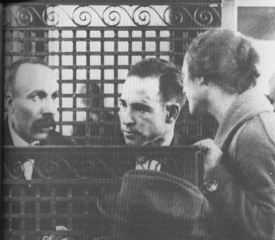
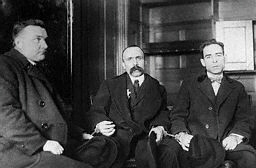
The lack of evidence, witnesses conflicting testimonies, language barriers, and prejudices in this trial lead me to believe that Sacco and Vanzetti are innocent. The courtroom was corrupt and these men were found guilty because they were immigrants and radicals. All immigrants were taken advantage of one way or another in America, but Sacco and Vanzetti were truly betrayed by a country they thought would treat them well.